
Dr Jane Aiken explaining the importance of getting soil ‘right’ at Portland Business Expo.
Story and photographs by Tracie McMahon
Building, renovating? There is so much to think about! This week we talk with Dr Jane Aiken, a local land consultant with Consulting and Environment Services (CESsoils). We discover why soil is foundational to getting your build ‘right’ and learn how to avoid some of the ‘traps’ for the unaware.
Finally! You have the approval to go ahead, and your build is underway after months of planning. The builder calls to check you have arranged the ‘fill’ needed for the site. “Sure”, you say, and then hurriedly try to remember where you saw the ad for ‘cheap fill’.
Dr Jane Aiken says “this is a real trap,” as landowners are legally responsible for all soil on their site. This means that they are also responsible for any contaminants the soil might contain. Without verification of soil quality, origin and transport from the supplier, remediation of the site and soil can be time consuming and costly.
Jane explains that soil management is complex. The range of landforms, combined with a history of quarrying, mining and farming, have resulted in unpredictable soil profiles. Recent fire and flood events have uncovered many new or unknown problems because soil was scorched or washed away. The only way to be certain is to have a soil analysis completed by a properly qualified specialist before you build, and then ensure you manage all soil movements correctly.
But what is soil anyway? And how is it different from ‘dirt’ and ‘fill’? To the untrained eye, a shovel full of each might look the same, but they are not.
Soil is the loose material that covers the surface of the Earth – the part that separates when you dig before you hit rock.
The difference, however, is what can be found in that ‘loose material’. Soil Science Australia explains:
“A teaspoon of soil is estimated to contain several thousand species of micro-organisms, and other invertebrates such as nematodes (round worms), annelids (earth worms), and microarthropods (springtails and mites). One square metre of soil can contain more species in it than a square kilometre of rainforest.”
Dirt and fill may or may not contain the living organisms that Soil Science Australia explains are essential for “breaking down organic matter and providing nutrients to plants”.
‘Fill’ is the material used in a construction process to create a level on which a structure can be built. Material used for fill is regulated by building codes. It may contain rocks, soil and dirt.
Jane’s business, CESsoils, works with developers and landowners to ensure that soil in the local area is protected. By testing soil and ensuring that it is contaminant free and meets the legislative requirements, she explains that it not only confirms geotechnical integrity for new developments but also protects the land on which they are constructed.
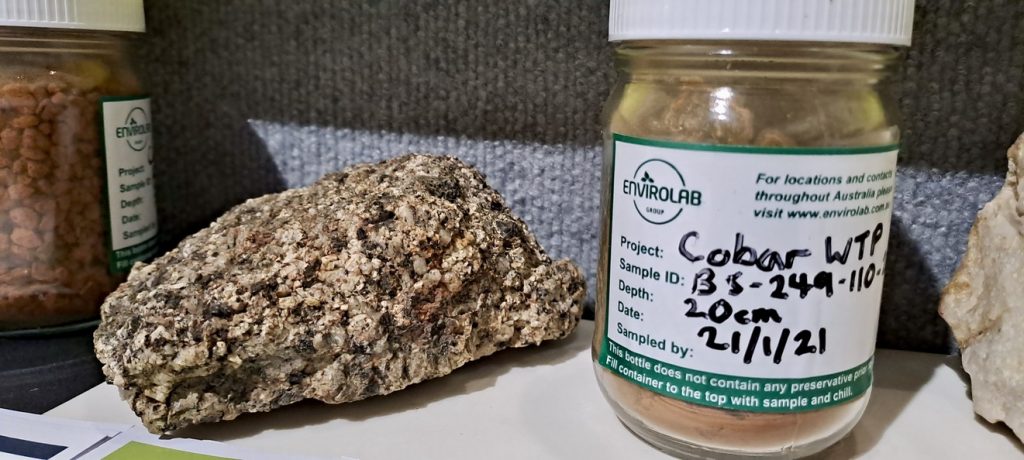
A collection of soils and rocks analysed by Dr Jane Aiken.
Jane points out that soil is also a valuable resource. Her business can certify the characteristics of soil which is to be moved, stored or reused. When soil was removed for the construction of the Carrington Hotel carpark in Katoomba, her business provided a ‘virgin excavated natural material’ certificate to the landowners. This involved examining the physical and chemical attributes of the soil to confirm its quality for transport and storage offsite, guaranteeing compliance with the Waste Regulation and Waste Avoidance Act.
She indicates that landowners are frequently unaware of the requirements relating to soil and ‘fill’. The legislation requires that landowners trace the movement of all materials coming onto a site to ensure that they are not contaminated in the process. This means that any transport providers and facilities from which fill or soil is sourced, must also have the correct procedures in place. Reuse of soil also carries varying legal responsibilities which landowners are often unaware of.
Landowner responsibility extends to materials illegally dumped on their site. Jane explains that unsecured building sites can be a “dumping ground” for contaminated materials. She has had clients financially devastated by the remediation costs of illegal dumping or accepting “free fill”, only to later realise that it contained hazardous materials such as asbestos.
Jane sees a part of her role in caring for the soil is to create awareness of its importance and the legal responsibilities involved in caring for it.
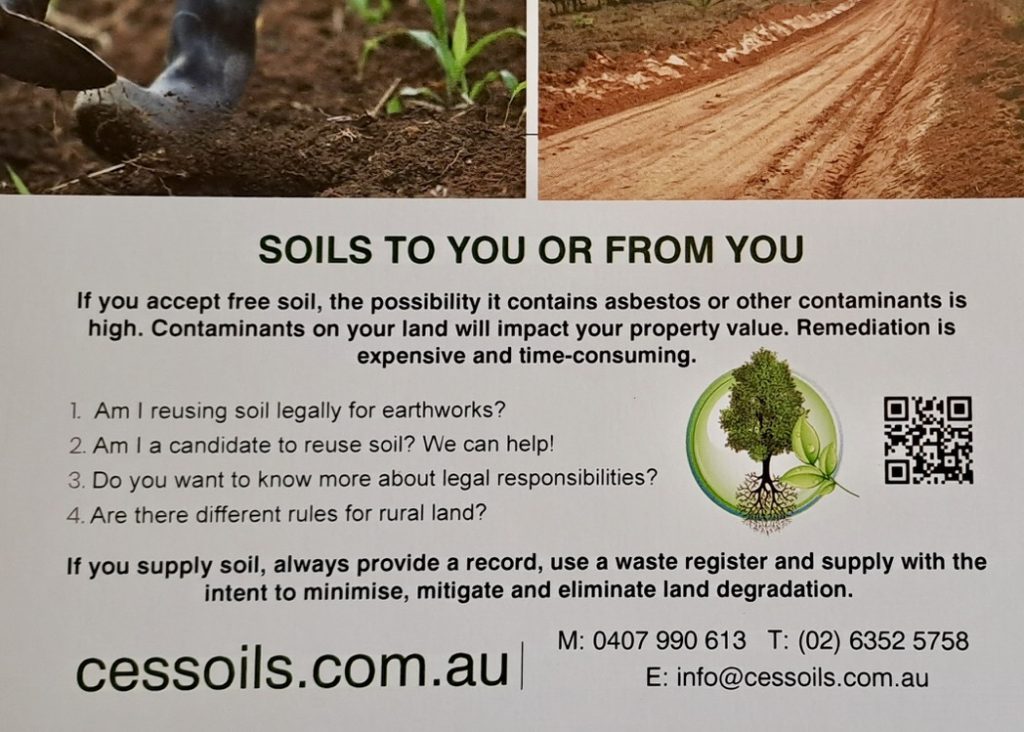
CESsoils Soil movement awareness information.
CESsoils provides land and building site design services to minimise environmental impact and construction costs. This can be extended to a full management service for development approvals. Jane sees soil management as foundational to each of these services.
Their website shows one of the company’s recent projects in which they designed a new wastewater system for a Dargan property affected by the 2019/20 bushfires. Other recent projects include a stormwater management assessment they did on an old quarry site in Kanimbla and locating a transportable home in Portland. In each case, soil assessment ensured that the development was located sympathetically to minimise the environmental impact.
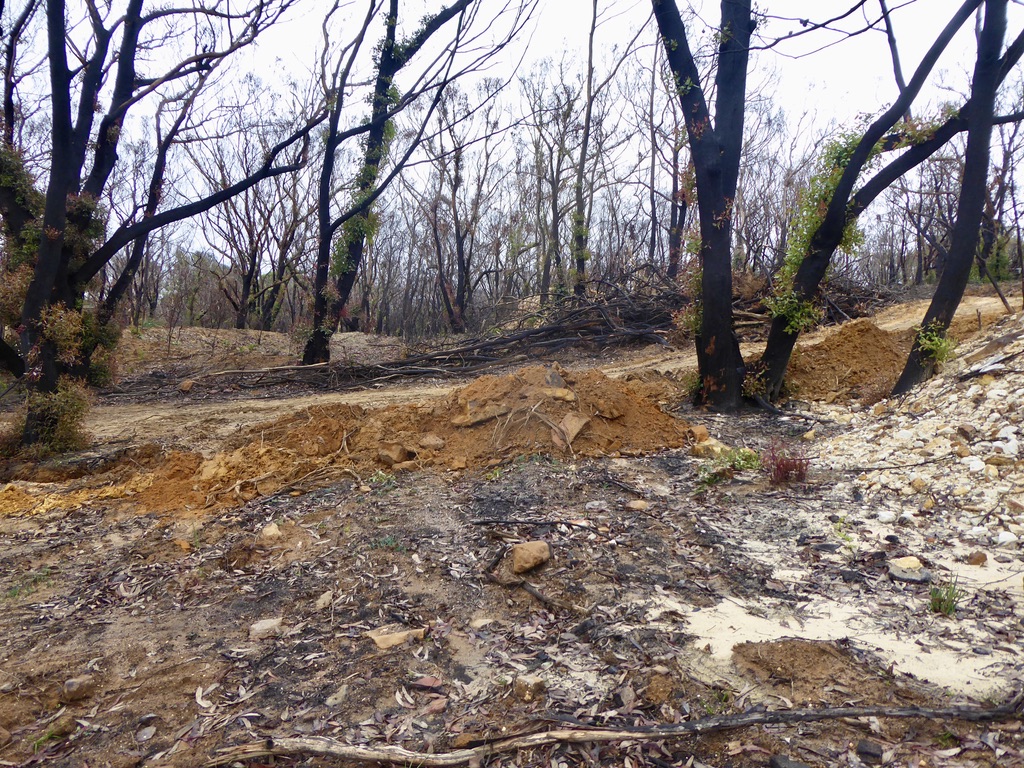
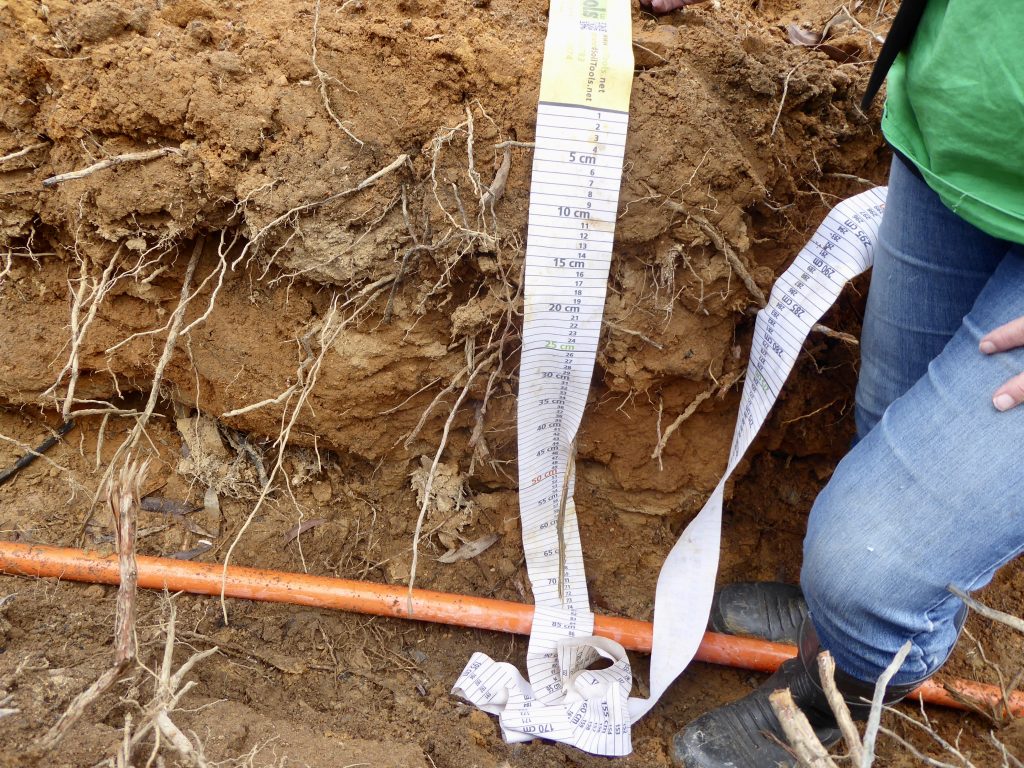
L. The bushfire affected site at Dargan
R. Jane completing a geotechnical soil profile investigation on site (J Aiken)
As we rebuild from the impacts of fire and flood with the uncertainty and spiralling costs of building in a post-COVID world, it can be tempting to cut costs. Fill and soil are areas that are often considered as a potential source of savings. However, they are foundational to the structural integrity of any building project and to the health of the land. If the soil or fill is contaminated, that will compromise the building and the land. Jane’s experience also suggests that the costs of getting it wrong can skyrocket.
Fact sheets and resources on soil and soil science, including teaching and learning resources, can be found at https://www.soilscienceaustralia.org.au/. This site also contains a list of certified soil scientists.
You can learn more about CESsoils and contact Jane via the company’s website: https://cessoils.com.au
This story has been produced as part of a Bioregional Collaboration for Planetary Health and is supported by the Disaster Risk Reduction Fund (DRRF). The DRRF is jointly funded by the Australian and New South Wales governments.


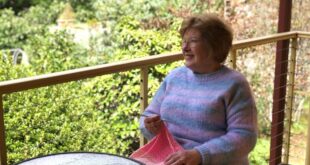


One comment
Pingback: Postcards from the Past, Present and Future - Lithgow Area Local News